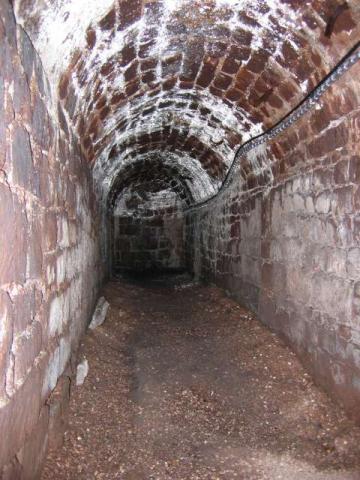
University officials announced today that the network of underground tunnels under the University's college hill campus will be opened to the public next spring. Due to paralyzing winters in Rhode Island and a grim forecast from leading environmental scientists, it was decided that campus infrastructure would be more resilient with an indoor conduit that traverses campus, and as luck would have it, it's already there.
In the 19th century, the tunnels were dug for use by staff to bring food and other supplies from a central kitchens to the dining facilities. Later, the same tunnels were used to move laundry and other supplies. It prevented bustle on the campus grounds and was intended to keep students from the distractions of heavily laden carts on the College Green.
Brown has contracted with local engineering firm, Odeh Engineers, to restore the tunnels to working order and ensure safety.
"The tunnels are very well preserved and in excellent shape," reports Bill Finger, an Odeh spokesperson, "while several junction points have been sealed, we are confident that the tunnels can be restored and made fully operational once more."
The tunnels not only connect campus facilities, but also connect to the East Side Railroad Tunnel and the Crook Point Bascule Bridge.
The tunnels had also been expanded to provide motor vehicle access to Carrie Tower and the East Side Trolley Tunnel. This tunnel was reportedly the inspiration behind the now famous Bat Cave, first published in 1943 and used by comic book hero Bat Man.
There are plans to extend the tunnels to Pembroke campus, pending approval from the city of Providence.
The University plans to open the tunnels to public tours led by the Rhode Island Historical Society, and use them to transport goods away from the bustle of congested East Side Streets.
